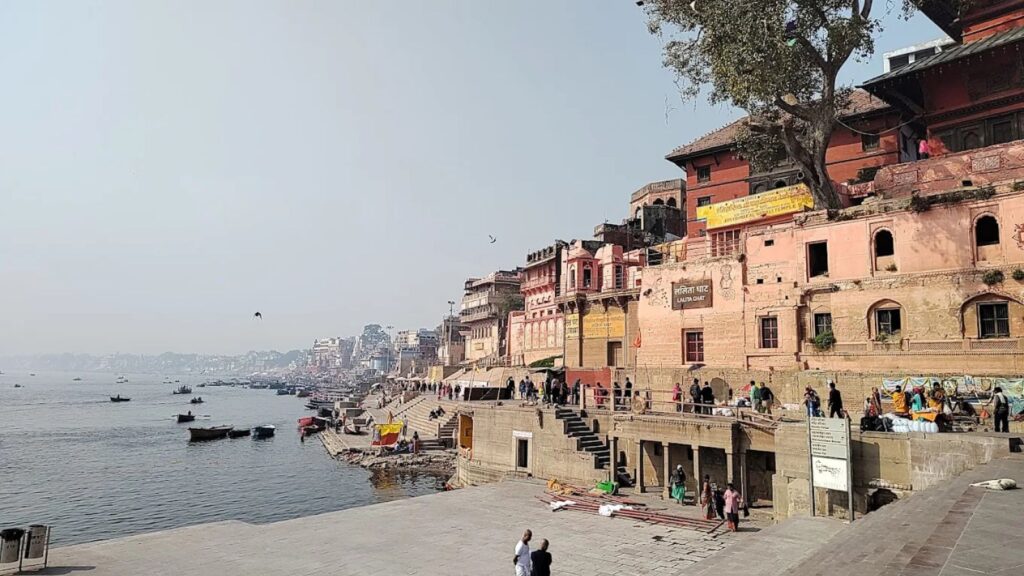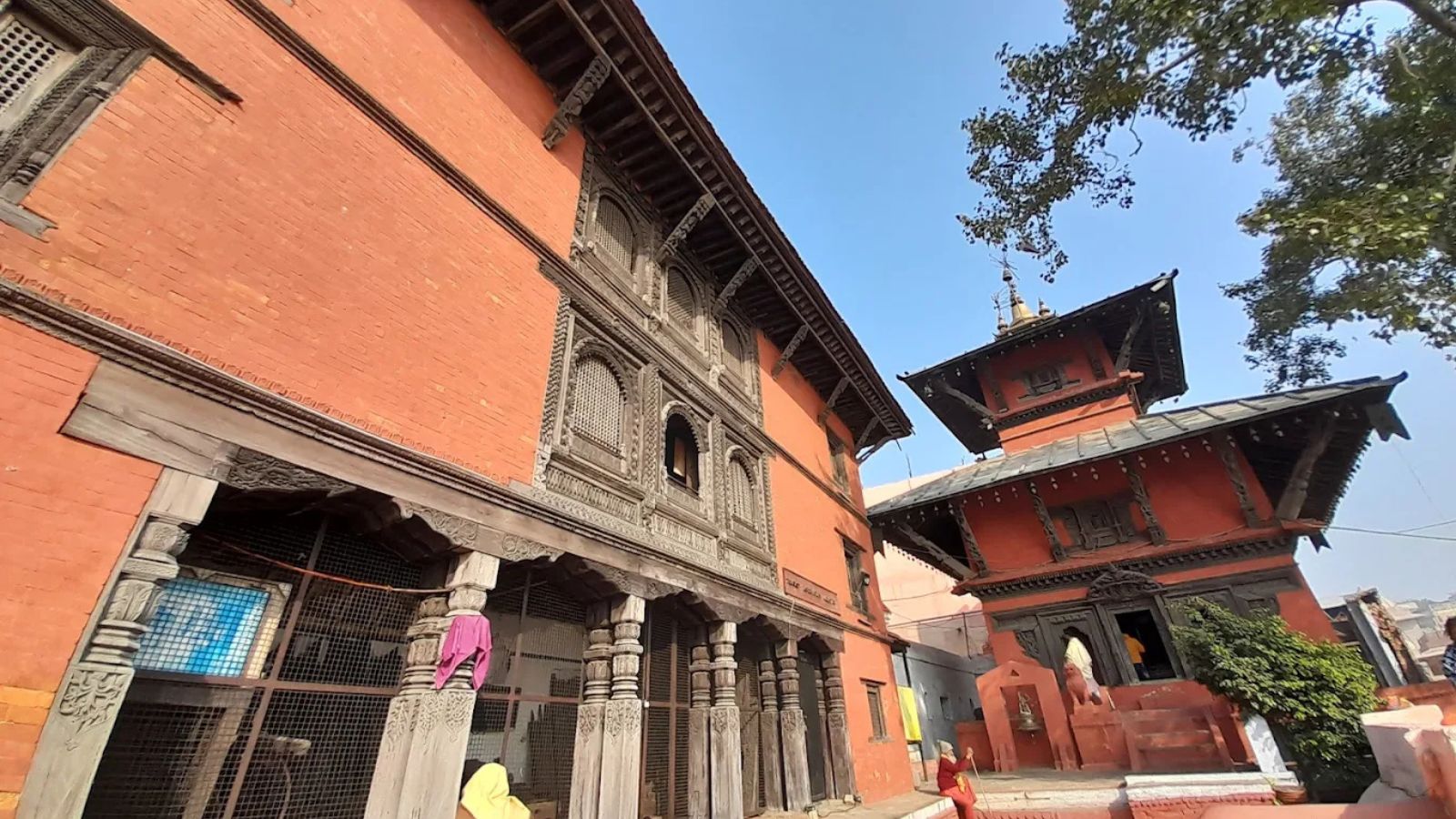On the banks of the Ganga at Lalita Ghat stands the Nepali Mandir, also known as the Kathwala Temple, a striking reminder of Nepalese culture in Varanasi. This temple was commissioned in the early 19th century by King Rana Bahadur Shah of Nepal, who had been forced into exile in Varanasi after political unrest in his kingdom. During his stay, he began the construction of this temple to replicate the famous Pashupatinath shrine of Kathmandu. He called himself as “Swami Nirgunananda.”
Rana Bahadur Shah later returned to Nepal in 1804, but his reign ended abruptly when he was stabbed to death by his stepbrother Sher Bahadur Shah. With the king’s death, work on the temple slowed. The temple was eventually finished around 1864 under the patronage of his son, King Girvan Yuddha Bikram Shah.
Dedicated to Lord Shiva as Pashupatinath, the Nepali Mandir combines wood, stone, and terracotta materials to showcase Nepal’s pagoda architecture and intricate carvings with mythological motifs. Unlike most ghat-side temples of Varanasi, its design and craftsmanship reflect Kathmandu’s artistry, earning it the name Kathwala Temple (“made of wood”).

A serene view of the Lalita Ghat, located nearby the temple
The temple complex features peaceful gardens and smaller shrines, making it a tranquil pilgrimage destination and an enduring symbol of cultural exchange between Nepal and India.
Pic Credits: Souvik Dasgupta



